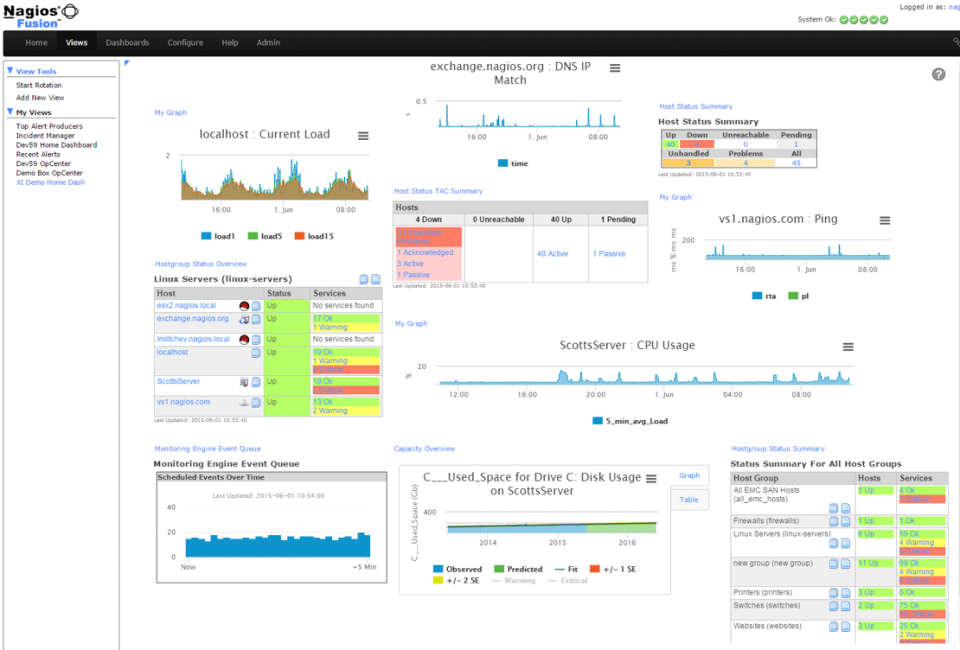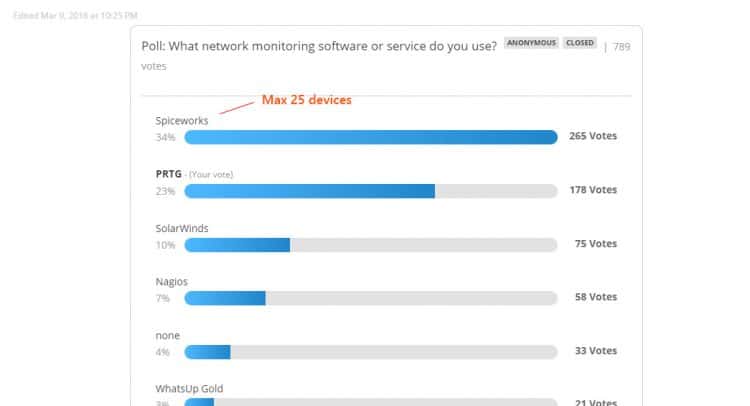

- #INSTALL SPICEWORKS AND NAGIOS HOW TO#
- #INSTALL SPICEWORKS AND NAGIOS PROFESSIONAL#
- #INSTALL SPICEWORKS AND NAGIOS SERIES#
We can perform Network Behavior and Anomaly Detection at the ‘Analytics Engine’. With this, we can correlate the events at the SIEM. So here, we are Monitoring the events on the on going basis and determining what level of risk we are experiencing.
Actionable Intelligence is nothing but information that can be acted upon, with the further implication that actions should be taken. To this ‘Governance Risk and Compliance System’ we attach a risk database. This SIEM is also connected to a ‘Governance Risk and Compliance System’ it basically provides dashboarding. Security intelligence (SI) is the information relevant to protecting an organization from external and insider threats as well as the processes, policies and tools designed to gather and analyze that information. Now to this Data Warehouse, we will connect ‘Analytics’ and ‘Security Intelligence’. Connected to this SIEM there are two important components, first one is a Data Warehouse. These two groups can then talk to a Security Information and Event Management system (SIEM), through a common language and in more automated fashion. #INSTALL SPICEWORKS AND NAGIOS SERIES#
So we have security tools and series of ‘End Points’, this can include client and servers, routers, switches, mobile devices and so on. In order to achieve Continuous Monitoring, we need to have all the parts talking to each other, let me explain that to you. they are connected with a ‘Security Information and Event Management system. We have various security tools, like Firewall, IDS, End Point Protection etc. Now, let me explain you the above diagram: This is the crux of Continuous Monitoring. If we take all these pieces and ensure the interlinking between them. Today’s Continuous Monitoring approache gives us the ability to aggregate all of the events that I discussed above, co-relate them, compare them and then estimate the organization’s risk posture. But, it did not provide proper analysis and response. For years our security professionals are performing static analysis from – system log, firewall logs, IDS logs, IPS logs etc. Continuous Monitoring comes into the picture, once the application is deployed on the production servers.Ĭontinuous Monitoring is all about the ability of an organization to detect, report, respond, contain and mitigate the attacks that occur, in its infrastructure.Ĭontinuous Monitoring is actually not new, it’s been around for some time. 
There is no end to a DevOps life cycle, and that is the reason for the infinity symbol. Looking at the diagram you must be thinking this is the last stage in the DevOps lifecycle, but this is not the case. Let me first tell you where Continuous Monitoring lies in the DevOps life-cycle, consider the diagram below: Yeah, it does a lot of cool work, but what is it? What is Continuous Monitoring? It can monitor your entire infrastructure and business processes.It ensures IT infrastructure outages have a minimal effect on your organization’s bottom line.It can be used to automatically fix problems when they are detected.It can respond to issues at the first sign of a problem.It allows us to plan for infrastructure upgrades before outdated systems cause failures.
 It monitors and troubleshoot server performance issues. It maintains the security and availability of the service. It determines the root cause of any issues. It detects any network or server problems. Important reasons to use a monitoring tool are: ) before they have any negative impact on your business productivity. Why We Need Continuous Monitoring?Ĭontinuous Monitoring Tools resolve any system errors ( low memory, unreachable server etc. Let’s begin this Nagios tutorial, by understanding why we need Continuous Monitoring because everything exists for a reason.
It monitors and troubleshoot server performance issues. It maintains the security and availability of the service. It determines the root cause of any issues. It detects any network or server problems. Important reasons to use a monitoring tool are: ) before they have any negative impact on your business productivity. Why We Need Continuous Monitoring?Ĭontinuous Monitoring Tools resolve any system errors ( low memory, unreachable server etc. Let’s begin this Nagios tutorial, by understanding why we need Continuous Monitoring because everything exists for a reason. #INSTALL SPICEWORKS AND NAGIOS HOW TO#
How To Add A Remote Server Using NRPE (Nagios Remote Plugin Executor). In this Nagios tutorial, I will be covering the below topics: It is integral to the DevOps lifecycle and is a must for DevOps Certification. Nagios monitors your entire IT infrastructure to ensure systems, applications, services, and business processes are functioning properly. So, I think this post will give you a good clarity on this Monitoring tool. I believe there are very few posts on Nagios, and not much relevant information available over the internet. #INSTALL SPICEWORKS AND NAGIOS PROFESSIONAL#
Become a Certified Professional Nagios Tutorial:







 0 kommentar(er)
0 kommentar(er)
